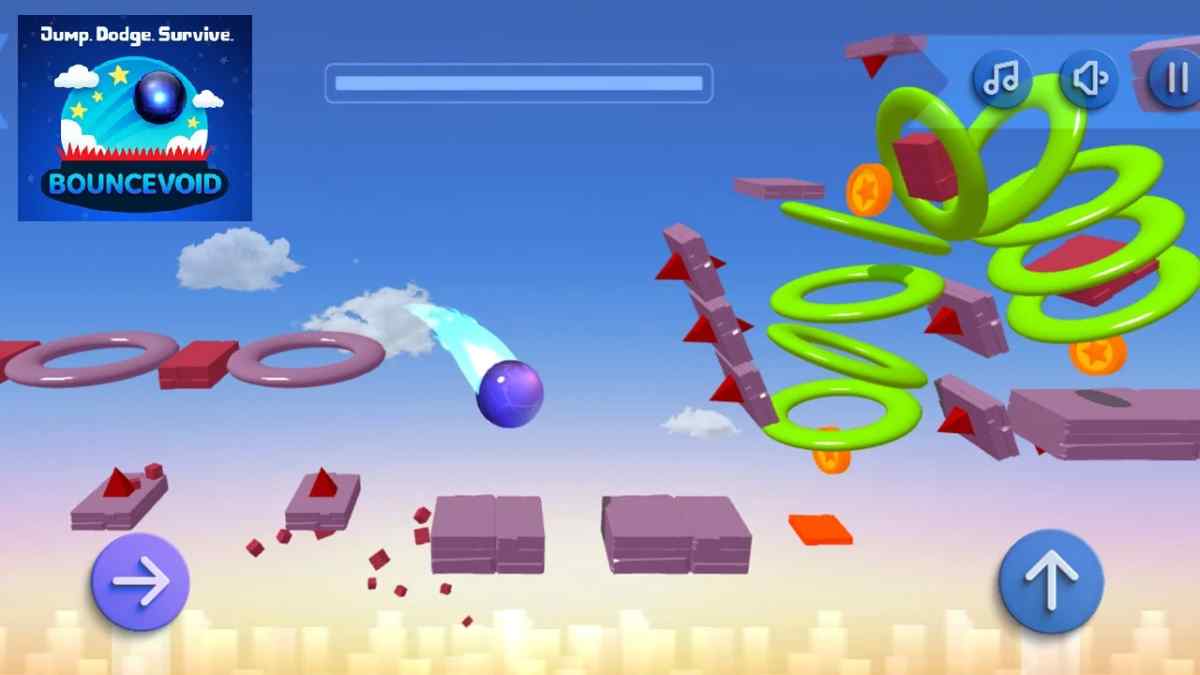Bouncevoid has quietly made its way onto Android, expanding its audience after debuting earlier on iOS. At first glance, it looks like another minimal arcade platformer. But beneath its simple style, it hides a steep skill curve and some surprisingly tight mechanics.
The premise is basic. You control a bouncing ball that never stops moving. One tap changes its direction. That’s it. The challenge comes from everything else: obstacles, gaps, spikes, speed, and gravity that doesn’t care whether you’re ready or not.
Core gameplay is built around momentum and timing
There’s no elaborate tutorial or progression system here. The game throws you in, and from the first bounce, it’s clear this isn’t about casual jumps. You’re working with physics that demands precision, and a world that punishes hesitation.
Each run is an upward climb through shifting hazards and disappearing platforms. Success depends on reading the level in real time, reacting to patterns, and staying calm under pressure. It has more in common with Duet or Super Hexagon than a traditional platformer.
This isn’t a game that evolves through upgrades or unlocks. What changes is you — your timing, your muscle memory, your focus.
Visual design stays minimal but effective
The look of Bouncevoid keeps things clean. Black backgrounds, bright neon lines, no clutter. It’s clearly designed for clarity over style, which helps when the pace ramps up. There’s no character art or narrative dressing. Just a small, bouncing sphere in a constantly shifting layout of platforms and traps. Music and sound effects are sparse but functional, keeping attention on movement and rhythm.
In a crowded mobile space full of noise, this stripped-back aesthetic feels intentional. Nothing pulls you out of the run. Everything is tuned toward the moment-to-moment flow.
Mobile release strategy and platform consistency
With the Android version now out, the game reaches a wider base of mobile players. There’s nothing fundamentally different between platforms. The tap controls and performance remain intact across devices, and the design is lightweight enough to run well on mid-range hardware.
There’s no monetization push, no ads between retries, no shops full of cosmetics. It’s a single experience focused entirely on execution. That decision sets it apart from the typical mobile arcade formula, where progress is often tied to grinding or currencies.
What stands out most is how the game refuses to soften its difficulty. This is a design choice that appeals to a specific kind of player — the kind who measures progress in seconds survived, not levels cleared.
A focused entry in the precision arcade niche
Bouncevoid doesn’t try to be broad or accessible. It picks a core mechanic and pushes it hard. There’s no filler, no side modes, no distractions. Just you, gravity, and the rhythm of the bounce.
For players who appreciate games that test timing and control in pure form, this one offers something sharp and unapologetic. There’s little room for error, but also no confusion about what the game wants from you.
That clarity is rare, especially in mobile games, and it makes Bouncevoid feel more deliberate than its minimalist surface suggests.
Mobile Game Addict & Casual Gaming Critic
She’s played more mobile games than most people have downloaded. TAPTAPTAP is fast, fierce, and funny — reviewing the latest hypercasual hits, idle clickers, and gacha grinds with real talk and zero fluff.




